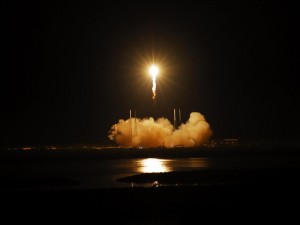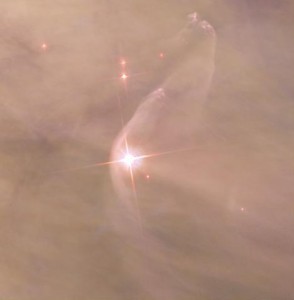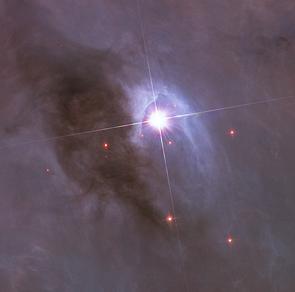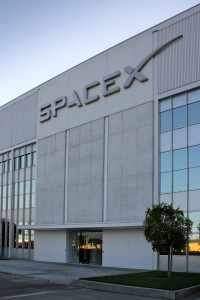Posts Tagged ‘NASA’
SpaceX Falcon 9 Launch Successful
I’ll post more about it once the Dragon completes its mission and we find out whether it met all the mission requirements. For now, congratulations to the SpaceX team for the quick turnaround. Here’s a picture of this morning’s launch from NASA:
If the mission is successful, we will be in a new era of space flight. Some people are already declaring the start of the new era with the launch, but that’s a bit premature – it actually has to do some work up there. As you might already know from reading my other articles, I’m skeptical about private industry’s vision and ability to think big, but any space flight is better than none.
No Bow Shock?
It was sort of a romantic notion, I guess: the idea that, as the solar system moves through the interstellar medium, the interaction between the outward flowing solar wind and the medium creates shockwave. Makes us seem like a missile traveling through space. At least, it makes for a pretty picture, as these examples around other stars shows:
Well, no such luck. It turns out our velocity vector isn’t in quite the right direction and its magnitude with respect to the interstellar medium isn’t great enough to produce a bow shock. Sucks, doesn’t it? I mean, we knew our Sun was pretty average as far as stars come, but give it a bow shock and, I don’t know, it sort of adds character. Now, we’re just back to being boring. Alien astronomers probably don’t even give our Sun a second look. And this was what was responsible for bursting our bubble:
SpaceX Launch Delayed . . . Again
So, crossing your finger really doesn’t work, though I guess we should do some double-blind trials just to make sure.
The launch of SpaceX‘s Falcon 9/Dragon flight to the ISS went all the way to ignition early this morning, but engine five had abnormally high chamber pressure readings on lighting, requiring a computerized abort. SpaceX confirmed that this was not the result of a sensor malfunction nor any computer glitch. The fuel valve was apparently operating normally, so we’re still waiting to find out exactly what went wrong.
SpaceX noted that while a failure of two engines during flight would not cause a failure, all nine engines have to be operational for a successful liftoff. Pressure problems have occurred in testing and during the first demonstration flight as well, though in the first test the pressure was off by a narrower margin, suggesting a different fault.
SpaceX’s Rendevous with the ISS
Space X’s COTS (Commercial Orbital Transportation Services) Demo Flight 2 is scheduled for Saturday. If the demonstration completes all the objectives set forth by NASA, the Falcon-9/Dragon system will be certified for regular cargo deliveries to the International Space Station. In other words, the United States will finally have a private sector replacement for the Space Shuttle‘s cargo delivery function.
While we’re all hopeful for success in this new phase in space exploration, I wonder why we couldn’t have had a proven system in place earlier, before the retirement of the Shuttle. Why are we still dependent on Russia to get our personnel to and from the station? It feels like we’ve set ourselves back, as if it’s 1959 again and we’re once again behind the Russians. I hope we can close the gap again quickly.
First Man on . . . the Asteroid?
Aim for the stars? Sorry, you’re going to have more reasonable expectations. How about Mars? The way we’re going, I’ll be lucky to see that in my lifetime, and I’m only 29. How about a return trip to the Moon? Well, after the way everyone in the media laughed at Newt Gingrich‘s campaign goal of establishing a permanent base on the Moon, I’m guessing the public’s not up for that project.
But don’t despair: for some strange reason, asteroids have really captured everyone’s imagination. Billionaires, space programs, and the public seem to all be happy with aiming for the asteroids. I don’t understand why – surely there is a greater probability of finding all sorts of minerals on the Moon or Mars – but perhaps asteroid are all we have the guts for these days. Plus, they get all sorts of movie attention. Have you ever seen a Hollywood film about us the successful Apollo missions? No, all we got was the failure – Apollo 13. How about a movie about a mission to Mars? Only if we meet something unpleasant there. The only time our space program has any success in the movies is when it comes to asteroids
So, enter NEEMO (NASA Extreme Environment Mission Operations) 16, the latest in the training programs for astronauts being prepared to work in deep space, which take place underwater:
The first NEEMO mission occurred in 2001, and they have since been essential in helping us get an idea about what astronauts might need in order to work in such a hostile environment. But what kind of deep space mission are the astronauts of NEEMO 16 being trained for? You guessed it – according to this article from the Telegraph, it’s to land and work on asteroids.
Details from NASA’s Vesta Press Conference
In 2007, NASA launched the Dawn spacecraft bound for the solar system’s second largest asteroid – Vesta. It entered the orbit of Vesta in July of 2011 and will continue in orbit until August of this year, after which it will be bound for the largest asteroid – Ceres – which it will reach in 2015.
The press conference about Dawn’s findings today centered on Vesta’s Rheasilvia Crater and its age. Rheasilvia is a massive impact crater with a central peak – Rheasilvia Mons – which ranks as the tallest known mountain in the solar system (with Olympus Mons a close second). The material ejected by the impact amounts to about 250,000 cubic miles, and makes up around six percent of the material in the asteroid belt, including the Vesta family of asteroids. Some of it has even reached Earth, so that scientists knew what to look for when launching this mission to Vesta. Evidence now clearly indicates that the impact occurred a billion years – much more recently that the majority of impacts on the Moon, which occurred over three billion years ago. According to the researchers in the conference, this puts constraints on ideas about solar system dynamics – the way objects have moved around the solar system since its formation.
NASA’s NuSTAR Black Hole Hunter
NASA’s Jet Propulsion Lab just posted this video introducing the Nuclear Spectroscopic Telescope Array (NuSTAR) X-Ray telescope. This is a purely non-technical (public-friendly) presentation, so I’ll try and get more detailed information about the project. Personally, I’m more interested in the launch method, which is an L-1011 carrying one of Burt Rutan’s Pegasus rockets.
Just a thought: NASA really needs to do a better job of explaining to the public why the information we might get from black hole research might be valuable. They certainly don’t make that clear in this video, and I worry that they risk facing more budget cuts if they don’t grab the public’s attention a bit more compellingly.
The project was supposed to launch on March 21st, but has been delayed, and they’re looking at a possible June launch. Apparently, the delay was due to software problems with the launch vehicle.





